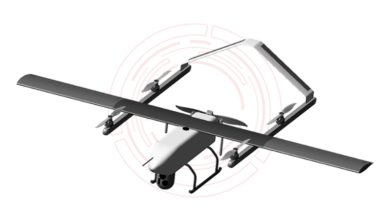5 Ways To Free Up Your Mac Hard Disk Space



Regardless of how large the storage is in your Mac, you’ll run out of space at some point. Once the disk space is filled up, performance drops on your computer. That’s why you should free up disk spaced to allow it to run smoothly.
Creating more storage space involves cleaning unused or temporary files or software. Besides, there are many tools designed to optimize space. You just need to install the app, run it, and allow it to clear clutter.
Freeing space manually is also an easy process that won’t take much of your time. If you’re wondering how to go about it, we’ll look at five ways you can reclaim space in your Mac and enhance its performance.
Find Out What’s Taking Up Space In Your Mac:
The best place to begin the cleanup process is to identify what is eating up your storage. If you don’t want to go a long way, scan your Mac with a few clicks using the best cleaner. It is one of the reliable disk analysis tools that scan your Mac’s storage, making it easy for you to delete the files and folders using up space.
To manually check what’s taking your space:
- Click on the Apple menu – located in the upper-left corner of the screen.
- Select ‘About This Mac’
- Choose ‘Storage tab.’
If you do this correctly, you should be able to see an overview of the available space on your disk alongside how space is used. Your Mac calculates the files using up the spaces and places them in various coloured categories.
Now that you know the specific files and the space they take, you can begin freeing space. You want to keep important files and get rid of any files you don’t need. If you have large important files like videos, consider using external storage devices.
5 Ways To Free Up Your Mac Hard Disk Space:
Find and Remove Duplicate Files:
If you’ve been using the computer for a long time, it is quite surprising to know that your duplicate files are littering up your computer and take up lots of drive space.
Getting rid of duplicate files is a great way to declutter your Mac. While there are many ways you can end up with duplicates, they often result from multiple accidental downloads. Duplicate files can pile up over time and take up significant space.
There are two options for deleting duplicates. The first one is by using software to scan and identify files to be deleted automatically. Mac App Store features plenty of such apps.
The second option is doing it manually. However, the process is quick and easy. Just follow these steps.
- Launch the Finder app
- Go to file and select New Smart Folder
- Click the plus ‘+’ button in the top-right corner
- Search for files; music, videos, photos, documents, etc
- Sort the results in order of names
- Find duplicates and delete them
Remember to check the date to ensure the files are duplicate.
Empty Your Trash Cans:
As you have the Recycle Bin on Windows, the same is the Trash on a Mac. When you delete the files, they are sent to your Trash so you can restore them later if you change your mind rather than permanently deleting files from within the Finder.
When you delete files, they are moved to the trash can. They still take up your space since they are just marked for deletion. These files can accumulate to gigabytes in no time. But you can always empty the trash and create more space.
Steps:
- Select the Trash icon in the DOCK
- A window pops up where you can empty the files one by one: Select the file and delete it.
- Alternatively, you can empty all trash once: On the top-right corner of the Finder window, click Empty trash.
To avoid having to empty the trash can manually, change your setting in Finder preferences to empty the trash after 30 days automatically.
Uninstall Applications You Don’t Use:
Of course, there are some applications that you have installed on your Mac and they are taking up space. There are many apps in the App store and are all designed to be eye-catching and tempt you to install them. One can also opt for Mobile app testing companies, it gives you the functionality to watch a demo or even take the app for a test drive. However, most of these apps are not must-haves. Any app that you don’t use regularly is unnecessary, and you can get rid of it to free up space.
The good thing is that apps are easy to delete. Here are the steps:
- On the menu bar select ‘GO’ then click ‘Applications.’
- Search for the app you want to uninstall and select it
- Go to file and move the app to trash or simply drag and drop it to the trash.
- You may be prompted to provide the username and password. Enter them to authorize the action
- Empty Trash
However, some apps are harder to delete than others, and this method may not work. You might need a third party software that correctly deletes the app and all its files in such cases.
Clear Out Cache and Temporary Files:
Probably, there are temporary files on your Mac’s hard drive that you don’t need. These files often take up disk space for no good reason.
Your apps and browsers need cache data to operate faster. The data includes browsing history and cache, passwords, cookies, temporary files, incomplete downloads, folders, and more. All these take much space on your Mac that you can use for other reasons.
How to remove temporary files from your Mac:
- Exit or close all running apps
- Navigate to Finder
- If your Mac using Sierra or any latest OS, press the SHIFT key or hold down the OPTION/ALT key for older Mac OS and click the GO menu for a drop-down menu
- Select Library
- Locate and open the ‘Caches’ folder
- Select temporary files and caches to be cleared or select all and move them to the trash
- Empty the Trash
Store in iCloud:
Storing files in iCloud creates more space on your Mac. Apple gives every Mac owner up to 5 GB storage for free. But once you exhaust this space, you’ll have to pay for extra storage at fair prices monthly.
All it takes is syncing your Mac with iCloud for automatic saving. Here’s how to turn on documents and desktop on your mac:
- Go to Apple menu>System Preferences>Apple ID>iCloud
- For Mojave OS or older ones, go to Apple menu>System Preferences>iCloud
- Confirm iCloud Drive is on
- Select iCloud Drive> Options
- Select Desktop & Documents Folders
- It’s ready.
Conclusion
Do you get storage errors when trying to install new apps or update your OS? The only remedy to these problems is decluttering your hard drive. Freeing up the device storage speeds up its performance, saving you lots of time and stress. No more annoying delays and having to deal with apps or OS freezing constantly. You’re eventually going to get the dreaded “Your disk is almost full” error if you fail to keep your Mac’s hard drive clean, so you may start now and clear up some space. These top five tips are the best way to keep your Mac efficient and reclaim wasted storage space.


